Abstract
The biodurability of various glass fibers, rockwool, and ceramic fibers was examined in rat lungs and compared with natural mineral fibers. Experiments were based on studies that have shown that the biodurability of fibers is one of the essential factors of the carcinogenic potency of these materials. Sized fractions of fibers were instilled intratracheally into Wistar rats. The evenness of distribution of fibers in the lung was checked by scanning electron microscopy (SEM) or careful examination of the fiber suspension before treatment. After serial sacrifices up to 24 months after treatment, the fibers were analyzed by SEM following low temperature ashing of the lungs. Parameters measured included number of fibers, diameter, and length distribution at the various sacrifice dates, so that analyses could be made of the elimination kinetics of fibers from the lung in relation to fiber length (FL). Size selective plots of the fiber elimination correlated with fiber diameters enables the mechanism of the fiber elimination (dissolution, fiber breakage, physical clearance) to be interpreted. The half-time of fiber elimination from the lung ranges from about 10 days for wollastonite to more than 300 days for crocidolite. The biodurability of man-made vitreous fibers (MMVF) is between these values and is dependent on the chemical composition of the fibers and the diameter and length distribution. Results indicate that the in vivo durability of glass fibers is considerably longer than expected from extrapolation of published data on their in vitro dissolution rates.
Full text
PDF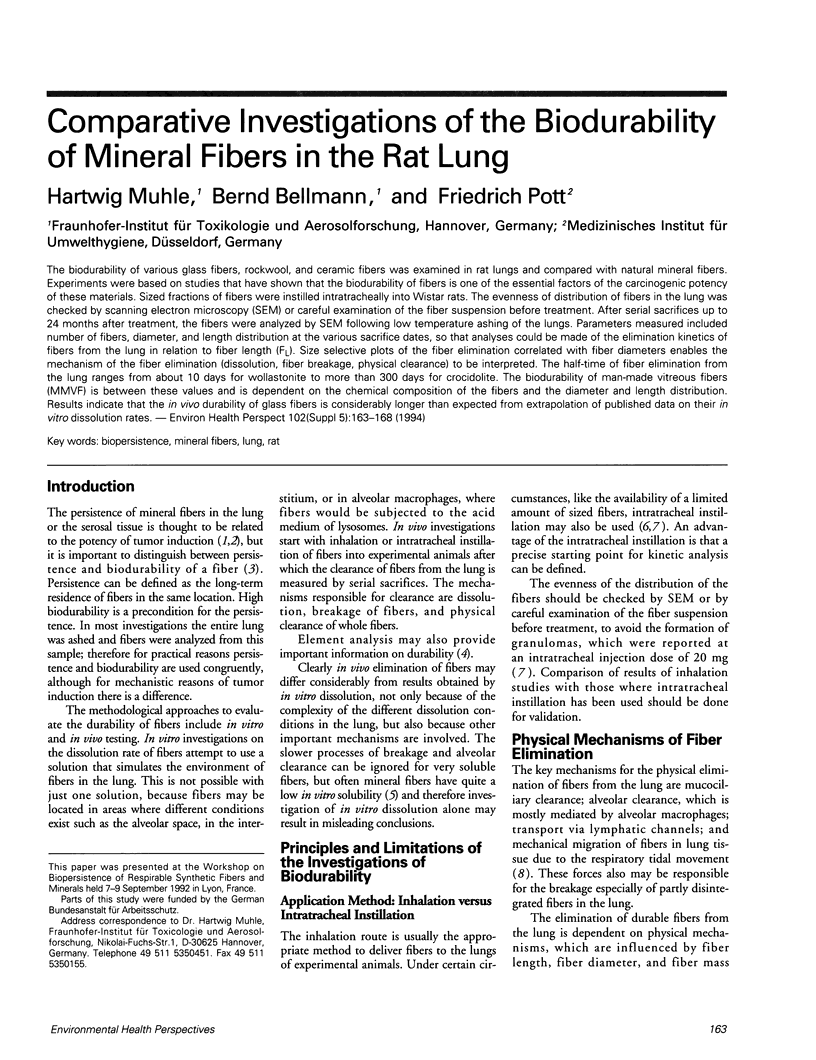
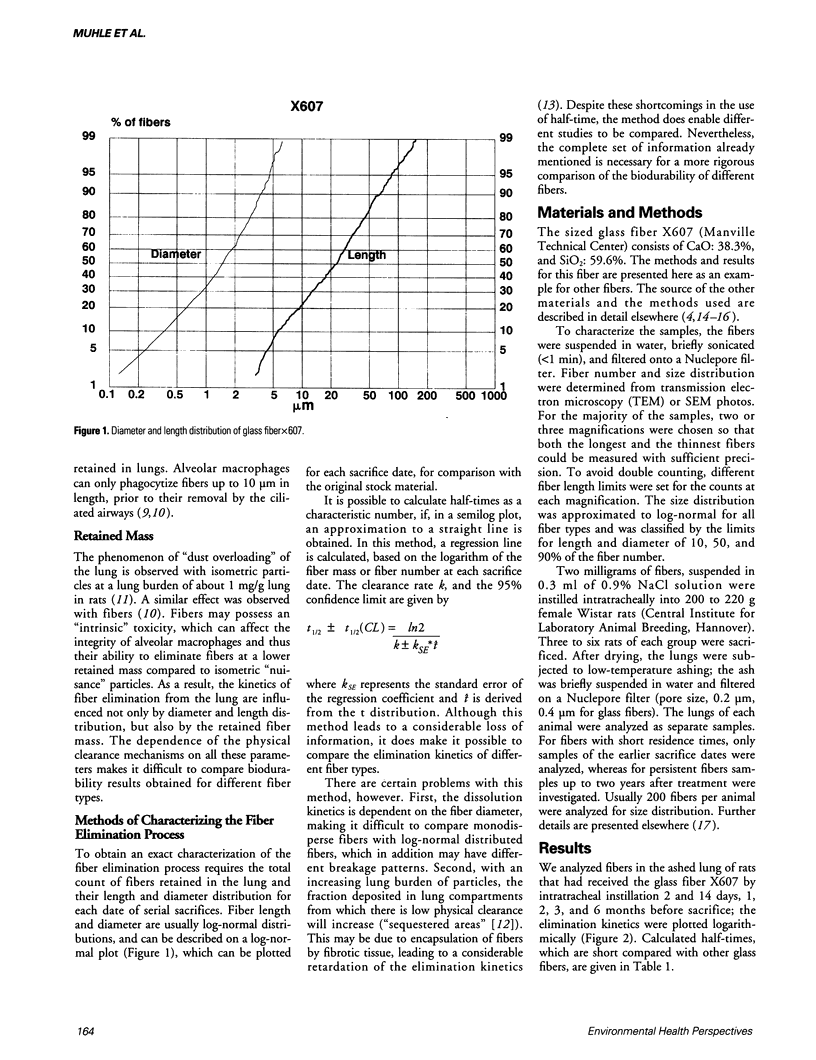
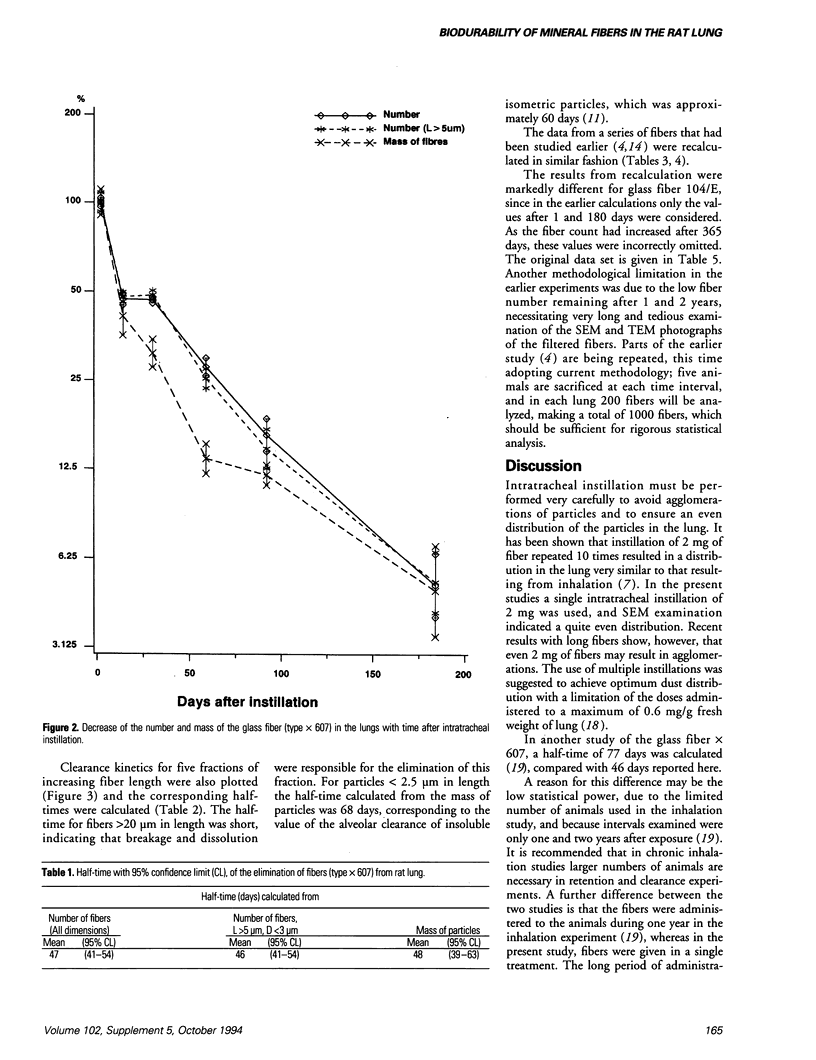
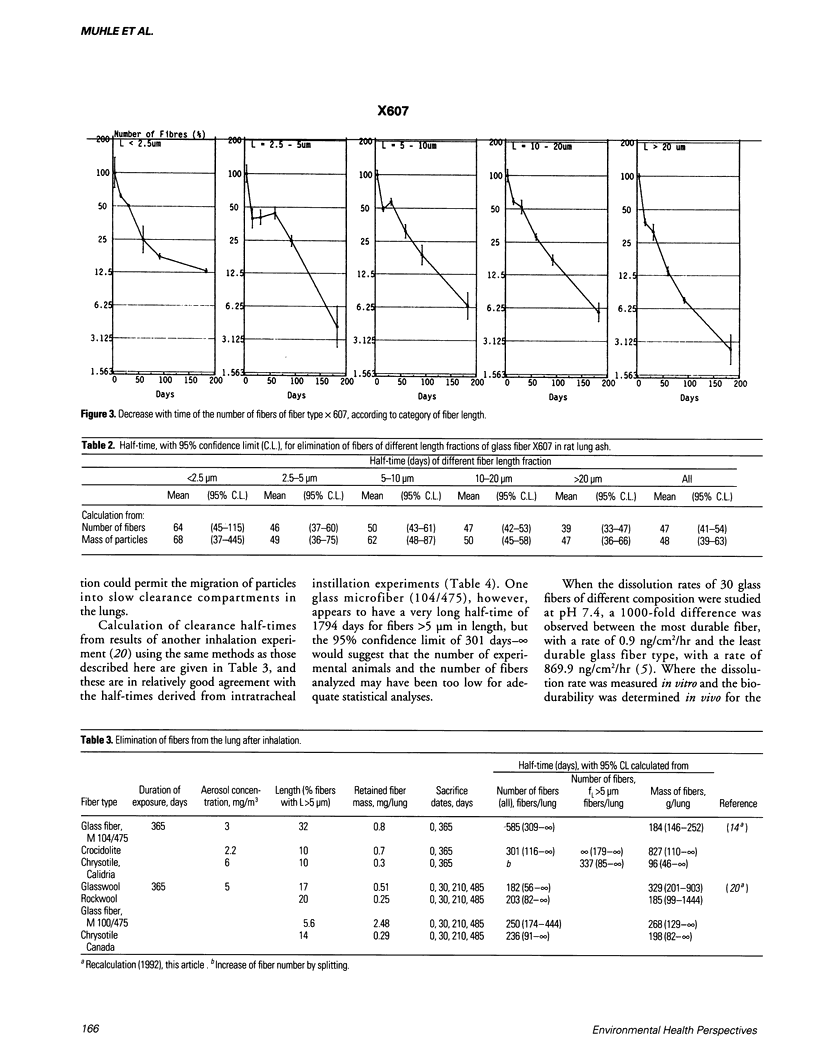
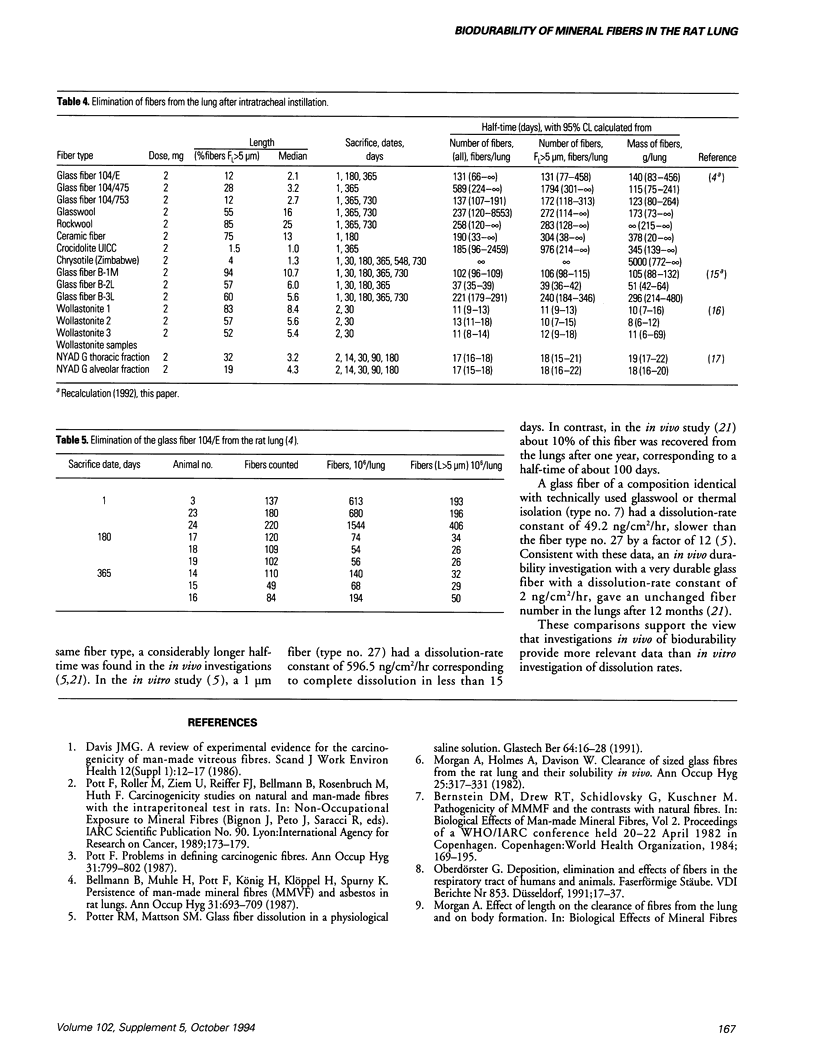
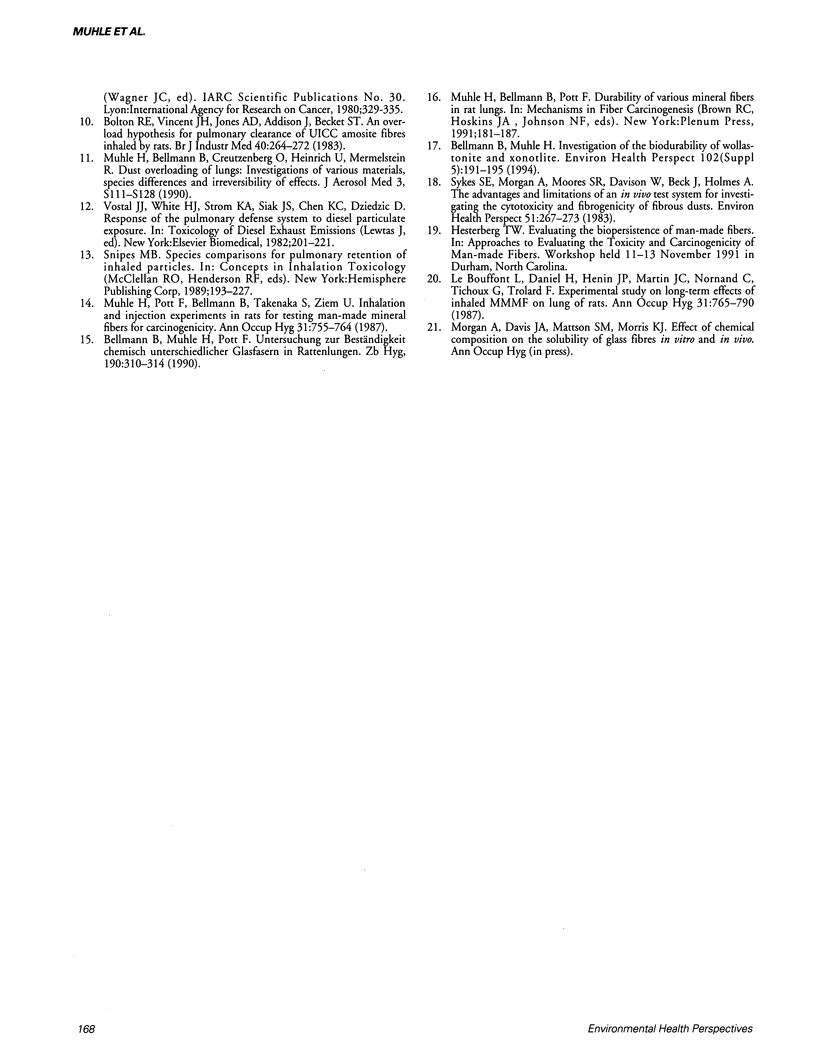
Selected References
These references are in PubMed. This may not be the complete list of references from this article.
- Bellmann B., Muhle H. Investigation of the biodurability of wollastonite and xonotlite. Environ Health Perspect. 1994 Oct;102 (Suppl 5):191–195. doi: 10.1289/ehp.94102s5191. [DOI] [PMC free article] [PubMed] [Google Scholar]
- Bellmann B., Muhle H., Pott F., König H., Klöppel H., Spurny K. Persistence of man-made mineral fibres (MMMF) and asbestos in rat lungs. Ann Occup Hyg. 1987;31(4B):693–709. doi: 10.1093/annhyg/31.4b.693. [DOI] [PubMed] [Google Scholar]
- Bellmann B., Muhle H., Pott F. Untersuchung zur Beständigkeit chemisch unterschiedlicher Glasfasern in Rattenlungen. Zentralbl Hyg Umweltmed. 1990 Sep;190(3):310–314. [PubMed] [Google Scholar]
- Bolton R. E., Vincent J. H., Jones A. D., Addison J., Beckett S. T. An overload hypothesis for pulmonary clearance of UICC amosite fibres inhaled by rats. Br J Ind Med. 1983 Aug;40(3):264–272. doi: 10.1136/oem.40.3.264. [DOI] [PMC free article] [PubMed] [Google Scholar]
- Davis J. M. A review of experimental evidence for the carcinogenicity of man-made vitreous fibers. Scand J Work Environ Health. 1986;12 (Suppl 1):12–17. [PubMed] [Google Scholar]
- Le Bouffant L., Daniel H., Henin J. P., Martin J. C., Normand C., Tichoux G., Trolard F. Experimental study on long-term effects of inhaled MMMF on the lungs of rats. Ann Occup Hyg. 1987;31(4B):765–790. doi: 10.1093/annhyg/31.4b.765. [DOI] [PubMed] [Google Scholar]
- Morgan A., Holmes A., Davison W. Clearance of sized glass fibres from the rat lung and their solubility in vivo. Ann Occup Hyg. 1982;25(3):317–331. doi: 10.1093/annhyg/25.3.317. [DOI] [PubMed] [Google Scholar]
- Muhle H., Pott F., Bellmann B., Takenaka S., Ziem U. Inhalation and injection experiments in rats to test the carcinogenicity of MMMF. Ann Occup Hyg. 1987;31(4B):755–764. doi: 10.1093/annhyg/31.4b.755. [DOI] [PubMed] [Google Scholar]
- Pott F. Problems in defining carcinogenic fibres. Ann Occup Hyg. 1987;31(4B):799–802. doi: 10.1093/annhyg/31.4b.799. [DOI] [PubMed] [Google Scholar]
- Sykes S. E., Morgan A., Moores S. R., Davison W., Beck J., Holmes A. The advantages and limitations of an in vivo test system for investigating the cytotoxicity and fibrogenicity of fibrous dusts. Environ Health Perspect. 1983 Sep;51:267–273. doi: 10.1289/ehp.8351267. [DOI] [PMC free article] [PubMed] [Google Scholar]
- Vostal J. J., White H. J., Strom K. A., Siak J. S., Chen K. C., Dziedzic D. Response of the pulmonary defense system to diesel particulate exposure. Dev Toxicol Environ Sci. 1982;10:201–221. [PubMed] [Google Scholar]


